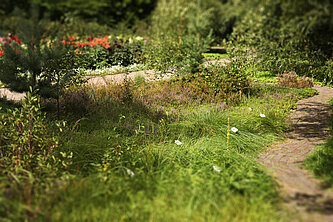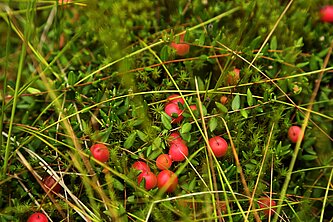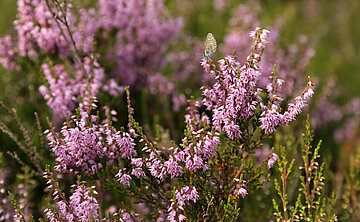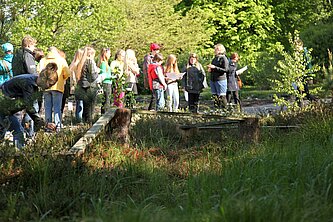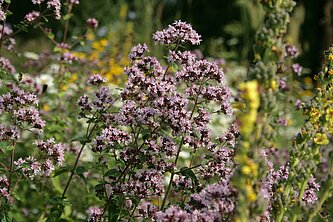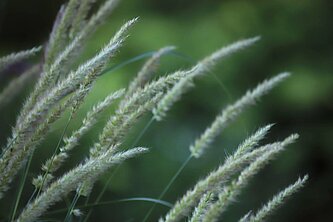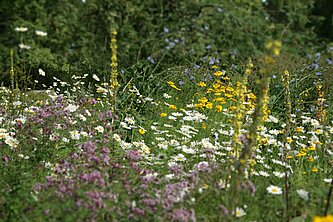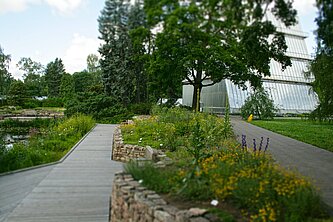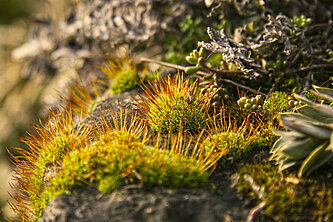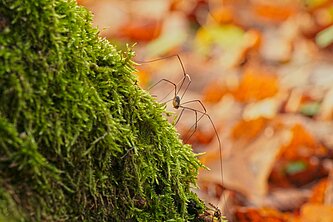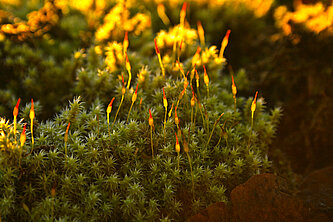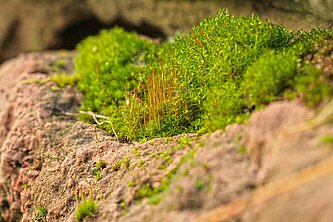Approximately 400 wild plant species of Latvia are growing among the decorative and exotic plants in the Botanical Garden. Some of the wild species are rare, especially protected and red-listed in Latvia.
Mire Plants
Mires in Latvia have developed during the last 10,000 years. They have originated in the negative relief forms of ground surface, which formed mainly as the result of the last glacier and its melting water activities. Mires comprise about 3.6 % from the total area of Latvia. More than half of the mires in Latvia are in a natural status – the others have been drained or used for peat cutting. Depending on the way how mires obtain water and nutrients they are divided into minerotrophic and ombrotrophic mires. Minerotrophic mires – fens and transition mires are fed by the waters which are in contact with the mineral soil. Ombrotrophic mires – raised bogs obtain water and minerals from the precipitation.
There are about 40 diferent plant species in our mire exposition. The total area of mire plant collection takes 120 m2 with especially prepared peat soil. Most of these plants are typical to transition mires or raised bogs. Eight plants of this collection are rare or protected in Latvia, for example Betula nana, Erica tetralix, Myrica gale and species from Orchidaceae family. For the present this is the only exposition of such kind in Latvia.
Grasslands and meadows
Grasslands and meadows belong to Latvian landscape. More than 520 various flowering plants and ferns are common in this ecosystem containing one third of all flora of Latvia. In the Botanical Garden, more than 70 flowering plant species from dry and moderately moist meadows are exposed. Most of them bloom from June to July.
Mosses
Bryophytes and lichens had already been studied in Latvia when the Botanical Garden opened in 1922. Back then, the director was Nikolay Malta, a well-recognized bryologist. Today, more than 560 bryophyte species have been documented in Latvia. Bryophyte research is mainly carried out in natural habitats like forests, mires and dunes, while the urban environment has only been partially studied. As a result, there is a little information about how bryophytes grow in the city, such as on house roofs, tree trunks, in cemeteries, near railways, etc.
In the Botanical Garden of the University of Latvia, preliminary survey of bryophytes resulted in discovering 50 different bryophyte species. It approves that botanical gardens with microhabitat and ecological niche diversity can sustain environment for high bryological and lichenological species richness.
You can learn more about 100 most common moss species of Latvia in the book made by Latvian bryologists: "Sūnu ceļvedis dabas pētniekiem".

 Academic Centre
Academic Centre
